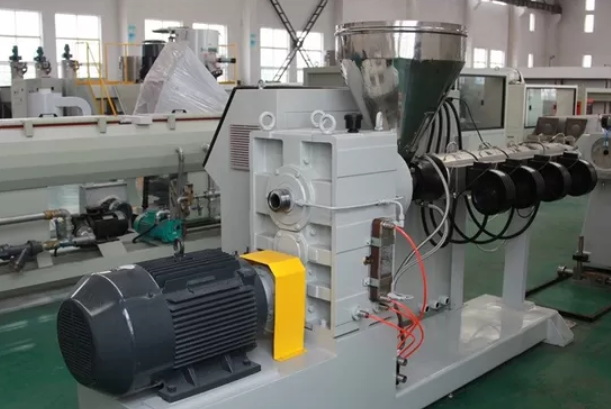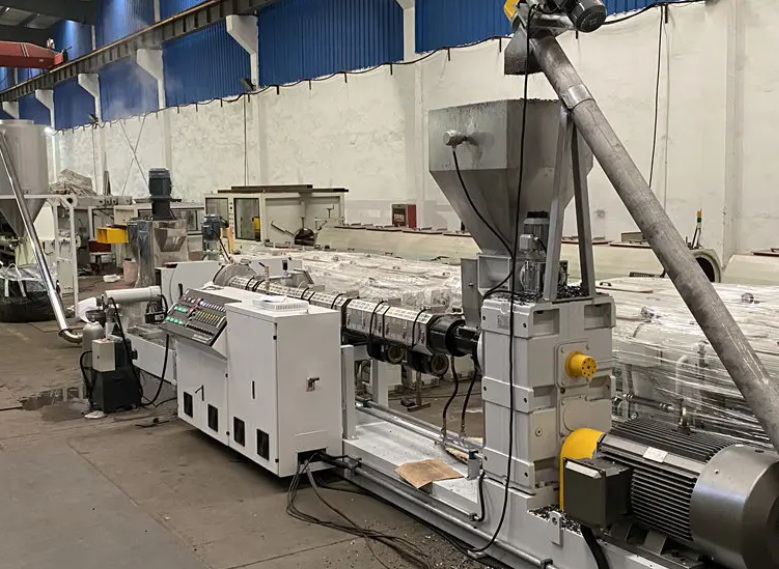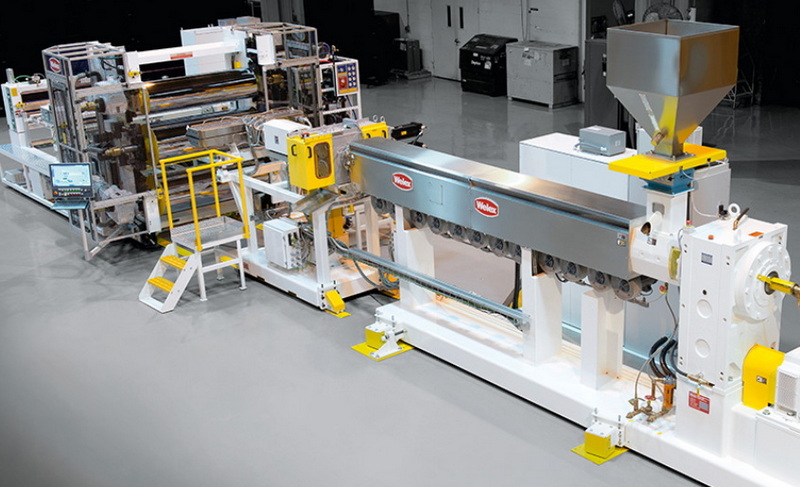Content Menu
● The Role of Seals in Extrusion Equipment
>> What Are Extrusion Equipment Seals?
>> Functions of Seals in Extrusion Equipment
● How Seal Quality Impacts Extrusion Equipment Efficiency
>> 1. Consistent Product Quality
>> 2. Equipment Longevity and Reduced Maintenance
>> 3. Energy and Cost Savings
>> 4. Safety and Compliance
● The Science Behind Effective Extrusion Equipment Seals
>> Material Selection
>> Seal Design and Extrusion Gap
>> Installation and Maintenance
● Consequences of Poor Seal Quality
>> 1. Increased Downtime
>> 2. Higher Maintenance Costs
>> 3. Product Quality Issues
>> 4. Environmental and Safety Hazards
● Innovations in Extrusion Equipment Seal Technology
>> Advanced Materials
>> Smart Sealing Systems
>> Custom Seal Design
● Best Practices for Maximizing Seal Performance
● Conclusion
● FAQs About Extrusion Equipment Seal Quality
>> 1. What factors determine the lifespan of an extrusion equipment seal?
>> 2. How does the extrusion gap affect seal performance?
>> 3. Why is material selection important for extrusion equipment seals?
>> 4. What are the signs of seal failure in extrusion equipment?
>> 5. How can manufacturers improve the efficiency of their extrusion equipment seals?
● Citations:
Extrusion equipment is the backbone of countless manufacturing sectors, from automotive and construction to electronics and consumer goods. At the heart of these machines lies a seemingly simple yet vitally important component: the extrusion equipment seal. The quality of these seals is not just a matter of preventing leaks—it is a cornerstone of operational efficiency, product consistency, equipment longevity, and cost control. This article explores in depth why seal quality is so crucial for extrusion equipment efficiency, delving into the science of sealing, the consequences of poor seal performance, and best practices for ensuring optimal results.

The Role of Seals in Extrusion Equipment
What Are Extrusion Equipment Seals?
Extrusion equipment seals are specialized components designed to prevent the escape of fluids (liquids or gases), block contaminants from entering critical areas, and maintain pressure within the system. These seals are typically made from materials such as rubber, PTFE, or engineered plastics, selected for their resistance to wear, temperature, and chemical exposure[1][4].
Functions of Seals in Extrusion Equipment
- Leak Prevention: Seals maintain the integrity of the extrusion process by preventing the escape of process materials and the ingress of contaminants[1][4].
- Pressure Retention: They ensure that pressure is maintained within the extrusion chamber, which is critical for consistent product quality[1][5].
- Friction Reduction: By minimizing friction between moving parts, seals reduce wear and extend the life of equipment[1].
- Energy Efficiency: Proper sealing reduces energy loss by maintaining optimal pressure and fluid levels, directly impacting operational costs[1].
- Contaminant Protection: Seals block dust, dirt, and other debris from entering sensitive machinery components, reducing maintenance needs and downtime[1].
How Seal Quality Impacts Extrusion Equipment Efficiency
1. Consistent Product Quality
High-quality extrusion equipment seals ensure that the extrusion process remains stable, leading to uniform product dimensions and properties. Poor seals can result in pressure fluctuations, inconsistent material flow, and product defects such as voids, warping, or uneven surfaces[2][3].
2. Equipment Longevity and Reduced Maintenance
Seals that are robust and precisely fitted protect internal components from abrasive particles and corrosive substances. This protection translates to less frequent repairs, fewer unscheduled shutdowns, and a longer service life for expensive machinery[1][4].
3. Energy and Cost Savings
Efficient seals minimize the loss of process materials and reduce the energy required to maintain pressure and temperature. This leads to lower operational costs, less waste, and a more sustainable production process[2][1].
4. Safety and Compliance
Leaks in extrusion equipment can pose significant safety risks, especially when handling hazardous materials. High-quality seals help ensure compliance with safety regulations and environmental standards by minimizing the risk of spills and emissions[1].
The Science Behind Effective Extrusion Equipment Seals
Material Selection
Choosing the right seal material is fundamental. Factors such as chemical compatibility, temperature resistance, and elasticity determine whether a seal will perform reliably under the demanding conditions of extrusion[4][5]. Common materials include:
- Nitrile Rubber: Good for oil and fuel resistance.
- EPDM: Excellent for steam and hot water.
- PTFE: High chemical and temperature resistance.
- Silicone: Superior flexibility and temperature tolerance.
Seal Design and Extrusion Gap
The extrusion gap—the clearance between moving parts—must be carefully controlled. If the gap is too large, the seal may extrude into the gap under pressure, leading to premature failure. Conversely, a gap that is too small can increase friction and wear[5]. Advanced seal designs, such as spring-energized seals or those with backup rings, can accommodate higher pressures and larger gaps without compromising performance[5].
Installation and Maintenance
Proper installation ensures that seals are not damaged or misaligned, which could compromise their effectiveness. Regular inspection and timely replacement of seals are essential for maintaining equipment efficiency and avoiding costly breakdowns[1][4].

Consequences of Poor Seal Quality
1. Increased Downtime
Seal failure often leads to unplanned equipment shutdowns, disrupting production schedules and increasing labor costs for repairs[1][4].
2. Higher Maintenance Costs
Frequent seal replacements and associated repairs drive up maintenance expenses and reduce the overall return on investment for extrusion equipment[1].
3. Product Quality Issues
Leaks and pressure drops caused by faulty seals can result in off-spec products, leading to increased scrap rates and customer dissatisfaction[2][3].
4. Environmental and Safety Hazards
Leaks of hazardous materials can create unsafe working conditions and result in regulatory fines or environmental damage[1].
Innovations in Extrusion Equipment Seal Technology
Advanced Materials
Modern seals use engineered materials that offer superior resistance to wear, chemicals, and extreme temperatures. These materials extend seal life and improve equipment reliability[1][5].
Smart Sealing Systems
Some advanced extrusion equipment now incorporates sensors and monitoring systems that detect seal wear or leaks in real time, enabling predictive maintenance and reducing downtime[1].
Custom Seal Design
Manufacturers can now produce seals tailored to specific applications, optimizing geometry and material selection for unique operating conditions[3][4].
Best Practices for Maximizing Seal Performance
- Select the Right Material: Match seal material to the process environment.
- Optimize Seal Design: Consider extrusion gap, pressure, and temperature requirements in seal design[5].
- Ensure Proper Installation: Use trained personnel and follow manufacturer guidelines to prevent installation errors[1][4].
- Regular Maintenance: Implement a proactive maintenance schedule to inspect and replace seals before failure occurs[1].
- Monitor Operating Conditions: Use sensors to track temperature, pressure, and seal integrity in real time[1].
Conclusion
Seal quality is a critical determinant of extrusion equipment efficiency. High-quality extrusion equipment seals not only prevent leaks and contamination but also ensure consistent product quality, reduce maintenance costs, and extend equipment life. By understanding the science of sealing, investing in advanced materials and designs, and following best practices for installation and maintenance, manufacturers can achieve optimal performance and reliability from their extrusion equipment. As the demands on manufacturing processes continue to grow, the importance of seal quality will only increase—making it a key area of focus for any operation seeking efficiency, safety, and long-term profitability.

FAQs About Extrusion Equipment Seal Quality
1. What factors determine the lifespan of an extrusion equipment seal?
The lifespan of an extrusion equipment seal depends on the material used, the operating temperature and pressure, the chemical environment, and the quality of installation. Regular maintenance and proper material selection are key to maximizing seal life[1][4].
2. How does the extrusion gap affect seal performance?
The extrusion gap—the clearance between moving parts—directly impacts a seal's ability to withstand pressure. If the gap is too large, the seal may extrude and fail prematurely. Properly designed seals and backup rings can help manage larger gaps and higher pressures[5].
3. Why is material selection important for extrusion equipment seals?
Material selection ensures that the seal can resist the specific chemicals, temperatures, and pressures present in the extrusion process. Using the wrong material can lead to rapid degradation and failure[4][5].
4. What are the signs of seal failure in extrusion equipment?
Common signs include visible leaks, pressure drops, increased friction or noise, and inconsistent product quality. Regular inspections can help detect these issues early[1][4].
5. How can manufacturers improve the efficiency of their extrusion equipment seals?
Manufacturers can improve efficiency by selecting high-quality seals tailored to their process, ensuring proper installation, maintaining optimal extrusion gaps, and implementing regular maintenance and monitoring procedures[1][2][5].
Citations:
[1] https://sealextrusions.com/blogs/news/the-role-of-seals-in-industry
[2] https://www.jingdongsj.com/article/pvc-sealing-strip-extrusion-machines.html
[3] https://glassseals.com/extrusion-seal/
[4] https://rubber.dlseals.net/articles/analysis-of-the-extrusion-sealing-principle-of-rubber-seals-the-key-to-ensuring-smooth-operation-of-equipment
[5] https://www.eclipseseal.com/blog/seals/extrusion-gaps-important
[6] https://contacall.com/tr/blog/pvc-seal-and-gasket-production-importance-of-extruder-temperature-control-48
[7] https://daextrusion.com/articles/seal-design-innovations-help-reduce-machine-maintenance-downtime/
[8] https://www.medicaldesignbriefs.com/component/content/article/26544-getting-the-most-from-your-extrusion-tooling
[9] https://www.repurvis.com/articles/where-use-extruded-rubber-seals-applications-benefits
[10] https://seashorerubber.com/blog/extrusion-process/
[11] https://www.sciencedirect.com/topics/engineering/sealing-efficiency
[12] https://www.pxlseals.com/blog/moulded-or-extruded-seals-make-the-right-choice
[13] https://plasticextrusiontech.net/what-are-the-benefits-of-using-plastic-extrusions-over-other-materials/
[14] https://www.pearltechinc.com/2025/02/13/extrusion-equipment-blown-film-efficiency/
[15] https://rubberxperts.com/rubber-extrusion/
[16] https://elastostar.com/what-is-rubber-extrusion/
[17] https://monroeengineering.com/blog/extruded-rubber-seals-everything-you-need-to-know/
[18] https://www.crownsmachinery.com/the-impact-of-rubber-extrusion-technology/






















